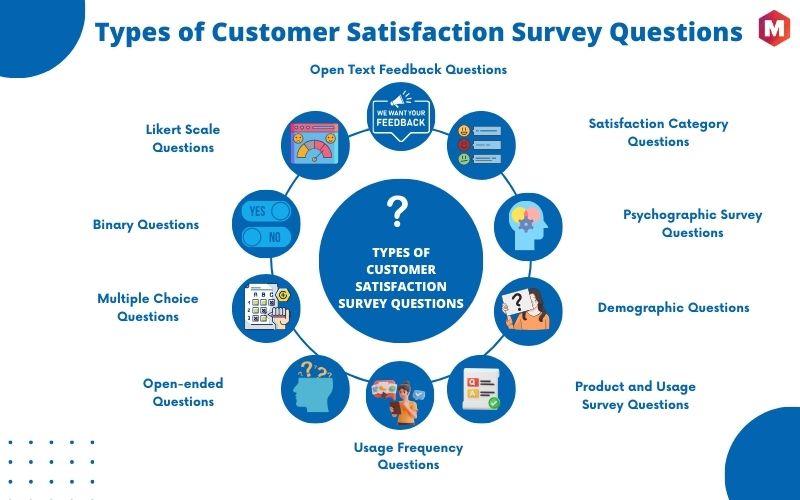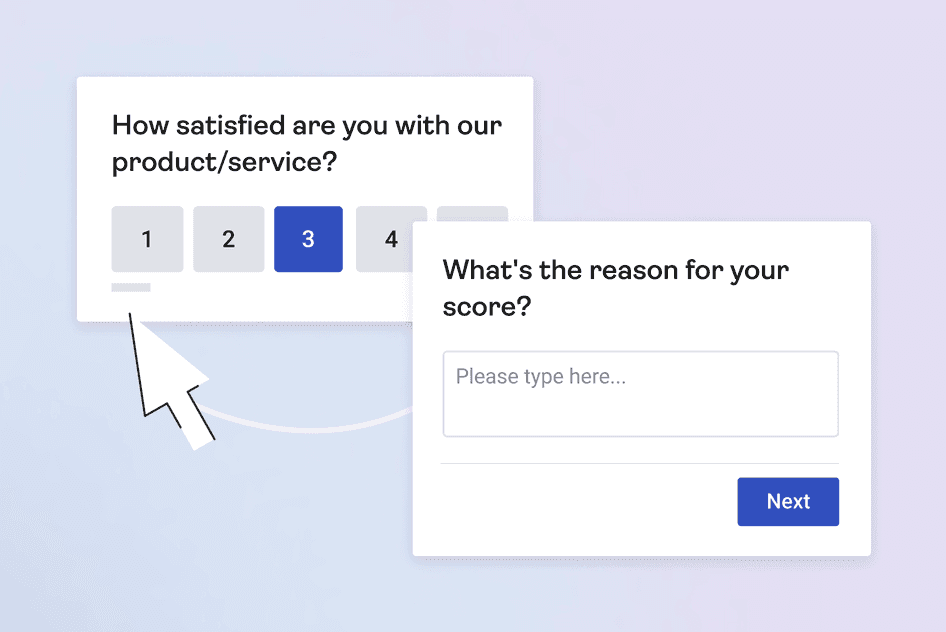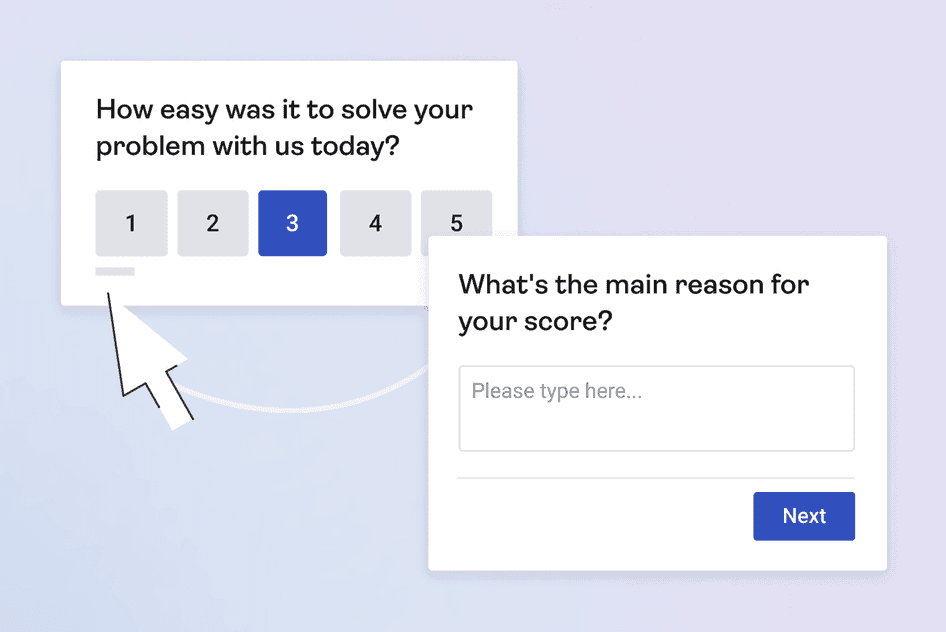When it comes to gauging the pulse of your business, a Customer Satisfaction Survey can be your most vital instrument. It’s your looking glass into what your customers really think about your products, service, reputation, and their overall experience with your company. By using this tool, you can gain deep insights into your customers’ needs and preferences, and use those insights to improve your services and products.
For example, let’s say you run a bakery and you’ve recently introduced a new variety of bread. You can use a Customer Satisfaction Survey to get direct feedback from your customers. Ask questions like “How did you like the new bread?”, “Would you recommend it to a friend?”, or “Do you think it’s priced fairly?”. Their responses will give you a clearer idea of whether the new product hit the mark, or if you need to tweak the recipe or pricing.
Table of Contents
What is a Customer Satisfaction Survey?
A Customer Satisfaction Survey is a method used by businesses to gauge the level of satisfaction among their customer base about their services, products, or overall experience with the company. This tool is essential in measuring the success of your offerings, identifying areas of improvement, and understanding customer loyalty.
The results of these surveys can directly inform strategic decisions, like product development, marketing campaigns, and customer service initiatives. A few key features of successful customer satisfaction surveys are:
- These surveys can be conducted through various channels like email, in-person interactions, phone calls, or social media.
- A well-structured survey not only measures satisfaction levels but also captures reasons for dissatisfaction, providing actionable feedback.
- These surveys typically include a mix of quantitative (ratings, rankings) and qualitative (open-ended responses) questions.
- It’s a cost-effective method to tap into customer sentiments, see patterns, and track changes over time.
- Regularly analyzing customer satisfaction survey results helps in keeping up with evolving customer expectations and improving customer retention rates.
The Importance of Creating Customer Satisfaction Surveys
Customer satisfaction surveys are an invaluable source of data for businesses. It gives them insights into customer needs and preferences, letting them make informed decisions about their products and services. These surveys can be used to:
1) Identify customer trends and uncover opportunities for improvement
Customer satisfaction surveys allow companies to gauge customer sentiment about their products and services. They can be used to understand which product features are popular among customers, identify areas of improvement, and measure the success of initiatives taken to improve customer satisfaction.
2) Improve customer service
A key benefit of conducting customer satisfaction surveys is that they help organizations assess how effective their customer service team is. Companies can use the survey results to understand what customers think of their customer service and make changes accordingly. This helps ensure that customer queries are addressed promptly and efficiently for better customer satisfaction.
3) Increase customer loyalty
By understanding customer feedback, companies can take corrective measures to ensure a high level of customer satisfaction. This helps build trust and loyalty among customers, making them more likely to stay with the organization for the long term. Additionally, customer satisfaction surveys can be used to track customer satisfaction scores (CSATs) and measure changes over time.
4) Satisfy customers who will spread the word
Happy customers are more likely to spread the word about their positive experiences with a company. This can help organizations reach out to potential new customers, and build credibility in the eyes of existing ones.
5) Optimize customer retention
Retaining customers is essential to ensure that a business can maintain its revenue and growth. Satisfaction surveys allow companies to identify customer pain points so they can take corrective action to create better experiences for their customers. This helps reduce customer churn and improve customer loyalty.
How to Measure Customer Satisfaction?
One of the most effective ways to measure customer satisfaction is by using a Customer Satisfaction Score (CSAT). CSAT is an invaluable metric that asks customers to rate their satisfaction with the service they receive. Scores are then averaged, giving companies a clear measure of their overall customer service performance.
To gather this data, a company often employs a customer satisfaction survey template. These templates are designed to gain insights into the customer’s experience, gauging their level of satisfaction with various aspects of the service. The feedback gathered from these surveys helps identify areas of improvement, enabling companies to refine their services to better meet customer needs.
Finally, the role of the customer service representative is integral to this process. These professionals are often the first point of contact for customers and therefore shape the customer’s overall experience. Their interactions with customers can positively or negatively affect CSAT scores, emphasizing the importance of continually developing and enhancing customer service skills.
Types of Customer Experience Surveys
- Net Promoter Score (NPS): This survey measures customer loyalty and brand love. You need to ask customers a straightforward question: “How likely are you to recommend us to a friend or colleague?” Rate on a scale of 0-10. Depending on the score, customers are categorized as promoters, passives, or detractors.
- Customer Effort Score (CES): CES surveys assess the ease of interaction with your company. The primary question is, “How easy was it to deal with our company?” The lower the effort, the higher the customer satisfaction.
- Customer Satisfaction (CSAT): These surveys focus on measuring customer satisfaction with a specific interaction or transaction. Customers are asked to rate their satisfaction on a scale, typically from 1 (very dissatisfied) to 5 (very satisfied).
- Milestone Surveys: These surveys are conducted at significant points in the customer journey, such as after a purchase or interaction with customer service. These surveys are valuable for understanding customer sentiment at critical touchpoints.
- Product-Market Fit (PMF): PMF surveys help determine whether a product meets the needs of a specific market. Customers are asked how disappointed they would be if they could no longer use your product. The goal is to see if your product is a ‘must-have’ for a significant percentage of customers.
Examples of 11 Types of Customer Satisfaction Survey Questions
For effective customer feedback surveys, you can use the following types of customer satisfaction questionnaires:
1) Likert Scale Questions
These questions require customers to express their level of agreement or disagreement on a symmetric agree-disagree scale for a series of statements. Some of the examples of such questions are:
- On a scale of 1-5, how satisfied were you with our service today?
- Rate your overall experience with our product on a scale of 1-5.
- How likely are you to purchase our product again?
- Rate your satisfaction with the customer service you received.
- How likely are you to recommend our product to a friend or colleague?
2) Binary Questions
These are simple yes/no questions that are straightforward and easy to answer. Different examples of binary questions can be:
- Was the product delivered on time?
- Did our product meet your expectations?
- Was our customer service representative helpful?
- Would you consider buying from us again?
- Would you recommend us to a friend or colleague?
3) Multiple Choice Questions
These questions provide customers with several answer options and can be used to gather quantitative data for example:
- What feature do you like most about our product?
- How did you first learn about our product?
- Which of our products do you use the most?
- What type of content would you like to see more of from our brand?
- How would you rate the value for money of our product?
4) Open-ended Questions
These questions allow customers to freely express their opinions, providing richer and more qualitative data such as:
- What improvements would you suggest for our product?
- Describe your overall experience with our service.
- What did you like most about our product?
- What did you like least about our product?
- Can you provide more details about your interaction with our customer service?
5) Usage Frequency Questions
These questions help to understand how often a customer uses a product or service for instance:
- How often do you use our product in a week?
- How frequently do you visit our website?
- How many times have you contacted our customer service in the past month?
- How often do you purchase our product?
- How frequently do you use our mobile app?
6) Product and Usage Survey Questions
These questions gather insights about a customer’s use of the product and their opinions about its functionality such as:
- Which features of our product do you use the most?
- What problems does our product solve for you?
- How easy is it to use our product?
- Do you find any feature of our product unnecessary or difficult to use?
- How would you improve our product?
7) Demographic Questions
These questions collect data about the customer’s age, gender, income, and other personal details for example:
- What is your age range?
- What is your gender?
- What is your education level?
- What is your occupation?
- Where do you live?
8) Psychographic Survey Questions
These questions help to understand a customer’s lifestyle, values, personality, and social class such as:
- How important is sustainability in your purchasing decisions?
- What is your favorite leisure activity?
- Do you prefer to shop online or in-store?
- How much do you value brand reputation when making a purchase?
- What are your top priorities when choosing a product?
9) Satisfaction Category Questions
These questions gauge customer satisfaction in specific areas (e.g., customer service, product quality) for instance:
- How satisfied are you with the quality of our product?
- How satisfied are you with our customer service?
- How satisfied are you with the delivery time of our product?
- How satisfied are you with the value for money of our product?
- How satisfied are you with the ease of use of our product?
10) Open Text Feedback Questions
These questions provide customers with an open text field to share their thoughts and opinions such as:
- Please share any additional comments or suggestions for our team.
- Is there anything else you’d like to tell us about your experience?
- Do you have any other feedback, comments, or concerns?
- Please share your thoughts about our new product design.
- Do you have any further insights to share about our customer service?
11) Action/Follow-Up Questions
These questions allow businesses to understand what action steps they might need to take after the survey for example:
- Would you like to be contacted by our customer service to discuss your feedback?
- Can we follow up with you after we resolve your issue?
- Would you be interested in testing our new product before launch?
- Would you like to receive updates about our new products and promotions?
- May we contact you for further clarification on your feedback?
Customer Satisfaction Survey Design Best Practices
When designing a Customer Satisfaction Survey, it’s crucial to keep the questions clear, concise, and targeted. This will ensure that the respondent’s time is respected and that the collected data is useful and actionable. Some of the tips that can help you in using customer satisfaction surveys effectively to know about satisfied customers, loyal customers, and unsatisfied customers are:
- Always start with simple and direct questions
- Use a mix of open and closed-ended questions
- Make sure the survey is user-friendly
- Consider the timing and frequency of the survey
- Use customer satisfaction data effectively by keeping the survey as short as possible
- Target new as well as existing customers to optimize customer and client retention
How to Choose the Right Customer Satisfaction Survey Questions
1) Selecting the Appropriate Survey Tool
Choosing the correct tool for your Customer Satisfaction Survey is of paramount importance. The right tool will allow for a more streamlined process, and the ability to easily analyze the data collected, and may even feature built-in survey templates that can be customized to fit your needs.
2) Opting for the Preferred Deployment Channel
Not every customer interacts with your business in the same manner. Some may prefer email communications, while others engage more on social media platforms. Therefore, it’s essential to identify and utilize the deployment channels your customers are most responsive to for the most effective survey distribution.
3) Deciding on a Template or Creating from the Ground Up
Depending on your specific needs and the complexity of your survey, you may choose to use a pre-existing template or design your survey from scratch. Templates can save time and provide a professional appearance, while a custom design allows for more flexibility and uniqueness.
4) Tailoring the Survey Questions and Theme
Your survey should reflect your brand and its values. Therefore, customizing the theme and the questions to fit your brand identity and the type of information you wish to glean from your customers is crucial. The questions should be both engaging and relevant, and the theme should be visually appealing and consistent with your brand aesthetics.
5) Initiating the Survey and Tracking the Results
Once the survey is designed and ready, it’s time to launch it. Monitor the responses and feedback in real-time, and be prepared to make adjustments as necessary based on the initial responses. Analyzing the data collected will provide insights to help improve your products, services, and overall customer experience.
Customer Satisfaction Survey Templates
1) Customer Satisfaction Score Template
The CSAT template showcases an image of a five-point scale ranging from ‘very dissatisfied’ to ‘very satisfied’, effectively capturing the customer’s level of satisfaction with a product or service. This simple yet powerful visual tool encourages participation and makes it easy for customers to share their feedback. It also asks participants about the reason behind the given score.
2) Customer Effort Score survey template
The Problem Resolution Ease survey template features an image of a scale with options ranging from ‘Very difficult’ to ‘Very easy’. This user-friendly visual aid is designed to prompt customers to rate the ease with which their problem or issue was resolved by your company.
FAQs
How to launch a customer satisfaction survey?
Launching a customer satisfaction survey involves creating relevant and engaging questions, customizing the survey to align with your brand, and then distributing it to your customers through various channels such as emails, social media, or your website.
Check our review of Hotjar, a survey tool with other interesting features such as Heatmaps, video recordings of user interactions,…
How to link customer satisfaction surveys to your customer journey?
Linking customer satisfaction surveys to your customer journey involves timing the distribution of these surveys strategically. Send them out at key touchpoints in the customer journey, such as after a purchase, a customer support interaction, or at regular intervals during a subscription service.
What are the problems with customer satisfaction surveys?
Problems with a customer satisfaction survey can include low response rates, biased responses, or customers not fully understanding the questions. To mitigate these issues, ensure your survey is concise, your questions are clear and unbiased, and consider offering incentives for participation.
What are the 4 types of a customer satisfaction survey?
Four key types of a customer satisfaction survey are:
- Net Promoter Score (NPS)
- Customer Satisfaction Score (CSAT)
- Customer Effort Score (CES)
- Product-Market Fit (PMF)
Liked this post? Check out the complete series on Customer Management



Customer Survey– An important aspect to determine the type/quality/brands/sizes/likes/dislikes of the consumers. It determines the quantity to be manufactured by the manufacturer.This in turn reduces the the inventory carying and insurance carrying cost thus optimizing the cost of carrying inventory